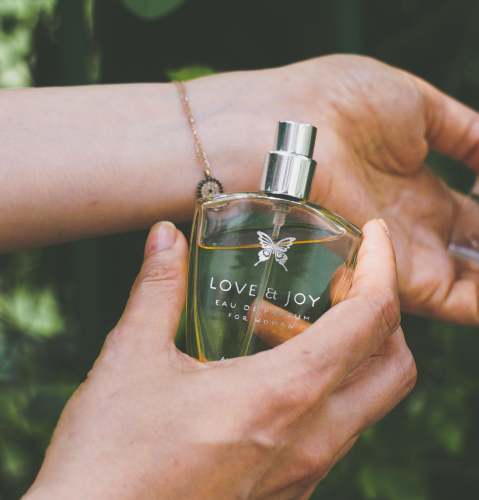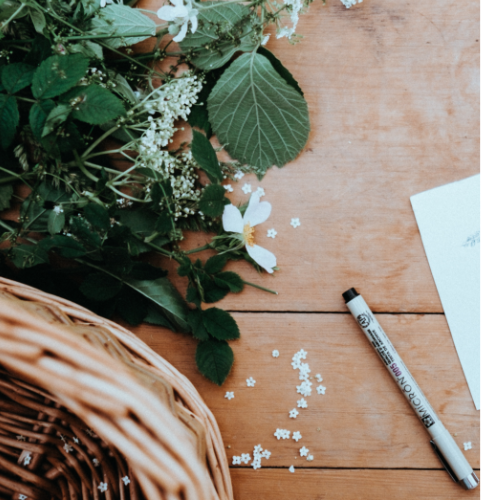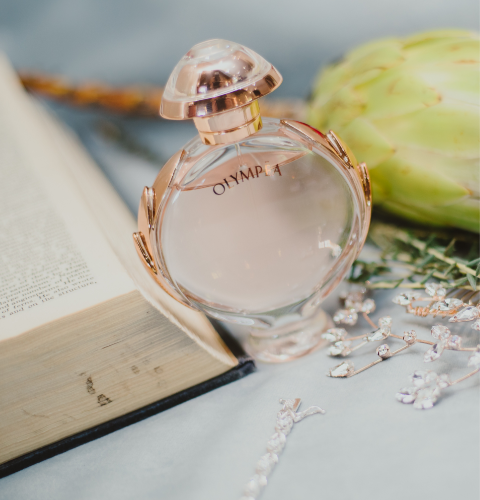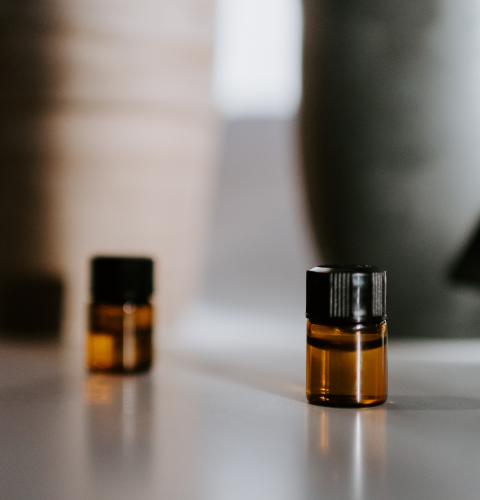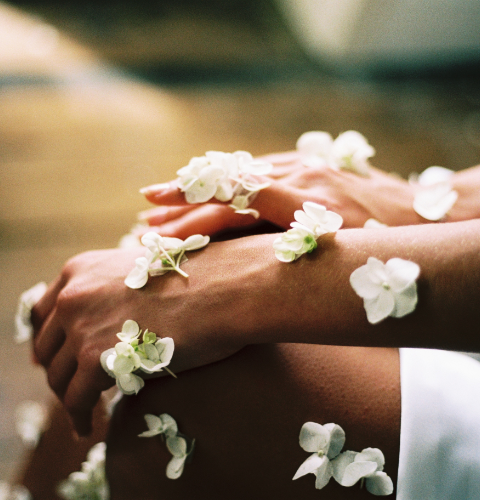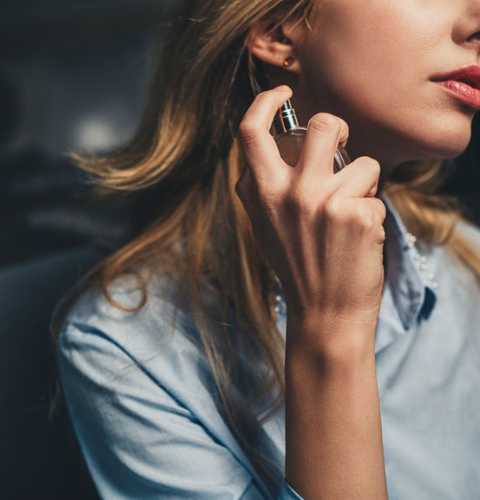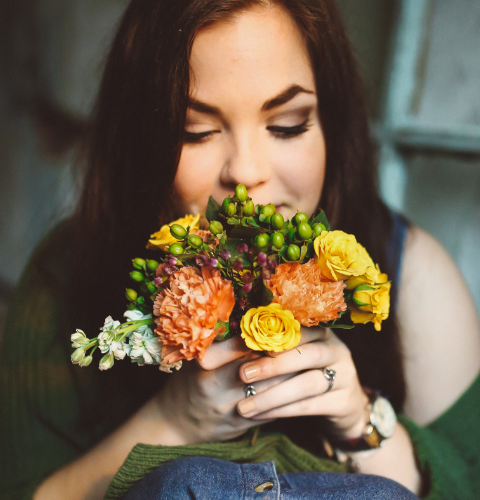Fragrance Q&A with Michael Edwards
Our work is multi-dimensional and complex; a meeting of science and art, creativity and data. Here you will find frequently asked questions to help you understand our world of fragrance. From technical terms to why we like what we like, the olfcative memory to practical tips on storing and wearing fragrance contact us if you have any lingering unanswered questions.

Choosing your next fragrance
Glossary
History
How fragrances are composed
New updates/trends
Wearing and storing your fragrance
Your olfactive memory
More
Choosing your next fragrance
You may feel that there can be no logic in your choice of perfumes because your sense of smell is so emotional, but the fragrances you most enjoy will probably belong to just one or two of the fourteen different fragrance families. Like most good things, it takes a little effort to find a new perfume that is just right. I recommend starting by understanding the difference between the fragrance families. You can do this by exploring my Fragrance Wheel. To see other fragrances in the same family, try my one of my fragrance matching products.
No more than three. Although you will find your sense of smell tires more quickly from similar fragrances than fragrances of very different character, you risk confusing your sense of smell if you test more than three different scents at one time.
You may assume that fragrances are confusing, a jumble of different perfumes with no rhyme or reason. It’s not true. If I classify the fragrances you have worn, I will probably find that they fall mostly into just two or three families. Once you know the families you especially like, my Fragrance Reference Guide will show you which other fragrances belong to the same family.
Apply a few drops or the lightest spray to your wrist or the back of your hand. Wait a few moments. Give the fragrance time to bloom on your skin, to let the notes ‘talk’ to you.
No. When you sniff an open bottle, your nose inhales the sharp bite of alcohol and the volatile top notes. A fragrance needs your skin to come alive. It blooms as it reacts with the warmth of your body to create a fragrance that is unique to you.
Test on blotting paper or a tissue. It’s not as good as testing on your skin but it is the next best thing.
Glossary
Odour molecules pass through your nasal passages to two tiny patches located behind the bridge of the nose. These patches are made up of millions of special olfactory or smelling sensors. The odour molecules dissolve in moisture and bind to tiny nerve hairs on the cells. Recent research has found that every cell is equipped with as many as a thousand different receptors, each designed to respond to a small group of different odours. These send messages about the odour to the limbic system, the part of the brain that governs moods and certain emotional responses. While the limbic system is largely devoted to smell, it also influences our hormonal, metabolic and stress responses and is the emotional centre for sexual desire, rage, fear and joy. That’s why fragrance is such an emotional experience.
Depending on your individual sense of smell, between 5,000 and 10,000.
Because it helps us feel good about ourselves and others. Recent psychological tests show that people who use fragrance regularly have a more positive attitude towards socialising and may be more socially skilled than those who seldom or never wear it. It was generally found that people who believe that others think they smell good have more confidence. More fun, too?
Because we all are programmed to like certain smells and dislike others. Our response to odour and fragrance, say scientists, is partly learned and partly genetic. We are born with definite likes and dislikes, as well as sensitivity to certain smells. Very early on, experience starts modifying and adding to them and we build up a complex “smell bank” of memories and associations. All this stored information determines whether or not we like a fragrance.
Because smell triggers the associative memory of clusters of events and feelings. We use this “memory” part of the brain to help us identify a particular scent because we can’t describe an odour. The closest we can come is to describe it in relative terms: “It smelled like ...”. A whiff of fragrance sends our brain searching in our “memory bank” of smells for old associations and connections that might help define the aroma. This is why, when smelling a rose today, you may suddenly have an image of your grandmother’s garden or a feeling of the fragrance your mother wore.
History
The secret to long-lasting fragrance is ‘fragrance layering’. Build up layers of scent on the skin by using different forms of the same fragrance - perfumed soap, bath oil or gel, body lotion or cream, dusting powder and eau de toilette. Each reinforces the impact of the other to quadruple the life of your favourite scent. Layering or “fragrance dressing” as it’s sometimes called, is also a clever way to wear a fragrance that’s too overpowering for daytime use.
Keep your fragrances in a cool, dry place away from direct sunlight and heat sources (such as radiators). Extreme heat or cold will upset the delicate balance of the oils and change their scent. Once a bottle of perfume is opened, use it. A spray lets in less air and evaporates slower than a bottle with a cap but even the finest essence fades with time. The best place for opened fragrance is in a closed drawer or wardrobe.
Where the skin is especially warm and where there is good blood circulation. This is because heat helps diffuse and magnify the aroma of fragrance. The “pulse points” on the body are the perfect activators for perfume. Because fragrance rises, it should be applied to several pulse points - not just, for instance, at the base of your throat. Consider the small of your back and your navel. If you prefer to have your fragrance trail you, apply it at the nape of your neck – just on the hairline – the heat and movement will diffuse your fragrance.
Inside your wrists. Inside your elbows. At the temple. Below your ear lobes, not behind. At the base of your throat. Behind your knees. And anywhere else you feel a heartbeat.
Spray about 20cm away from your skin. An even spray over a wider area will help your fragrance last longer than a generous amount in a small area. Should you rub one wrist against the other to dry the fragrance? No, because you’ll bruise the notes, dull their development.
Try the lightest spray through damp hair before you blow dry, or mist your hairbrush and comb with fragrance before use. Add a few drops of perfume to the water in a steam iron to lace clothes with fragrance, or rinse lingerie in scented water. If fragrance can make you feel so good, why not use its power?
Preferably not because each perfume is a balanced, complete creation. If you wear one fragrance on top of another, you may create a scentsation but, more likely, you’ll produce an odour. That said, there are some fragrance houses that specifically design their fragrances to be layered with eachother.
Diffusion is the ability of a scent to reach out from your skin and surround you and others with its aura. The ability of a scent to travel through the air - its effusiveness - is the test of a great perfume.
Depending on the fragrance, from 6-18 months, if stored correctly. Once a bottle of fragrance has been opened it should be used because all fragrance deteriorates with time: light, citrus-based perfumes in as little as six months; floral scents in about a year and a half.
How fragrances are composed
To most people, the words essentially mean the same, and you can safely use one or the other. You will find that usage varies from country to country: in the United States, fragrance is the more common description; in England, scent or fragrance. In France? Parfum! The fragrance industry tends to refer to the most concentrated form of a scent as perfume or parfum in contrast, say, to the less concentrated eau de toilette or cologne. Perfumers, on the other hand, use the word specifically to describe their fragrant creations, their perfumes. What is the difference between Perfume, Eau de Parfum or Parfum de Toilette, Eau de Toilette and Cologne? Each represents a different ‘concentration’ of actual perfume oil in a scent. Perfume, parfum or extrait is the most concentrated, longest-lasting fragrance form with 12 to 30 per cent perfume oils. The newer Eau de Parfum or Esprit de Parfum interpretations are almost as concentrated as the traditional extraits, but the Parfum de Toilette or Eau de Toilette (a Cologne, in the United States) is a lighter strength, with a level of fragrance anywhere from 4 to 18 per cent. In Europe, the word Eau de Cologne describes a very light level of fragrance, only 1 to 3 per cent oil.
Colognes or eaux de toilette are meant for your body, aftershaves for your face. Eaux de toilette (or Colognes) are blended with more fragrance - anywhere from 5 to 15 per cent essential oils - while aftershaves have a lighter scent, usually around 2 to 4 per cent, less alcohol (30 to 65 per cent) and incorporate soothing emollients and calming antiseptics.
How is a painting painted, a symphony composed? What is certain is that perfumers use their materials in much the same way as painters use their colours, musicians their notes. In an interview with William Kaufman, the perfumer Pierre Dhumez expressed it this way: “To make a perfume is to find a harmony of three or four dominant ‘bodies’ that you smell in your mind. You have an inspiration for a mixture of those three or four bodies, not more. And they will release themselves in such a way that when you have composed the ‘corps’ in the proportions by which you have been inspired when you were in a tranquil, happy state of mind, you will not be able to distinguish one odour from the other among your basic raw materials, It is a perfectly balanced mixture which smells as a separate entity from the odour of each of the three or four bodies you have chosen - and in so doing you will have created the ‘woman’. After that, you have to enhance her, make her more beautiful, do her hair, select her dress, her lipstick, her eye liner, her hat, her wrap - and that is a perfume.” (William Kaufman, Perfume, E.P.Dutton, 1974). “Aliage... was sporty,” wrote Estée Lauder. “I’d picked up a green leaf in Palm Beach one day, deeply inhaled its scent with wonder, and knew I had to re-create that smell. The active woman needed a scent all her own: when she went to a gym in her tennis shoes, she didn’t want to conjure up a whole symphony orchestra. I could never find a scent that would be right on the tennis court, so I had to invent it.” (Estée Lauder, Estée, A Success Story, Random House, 1985). A perfumer is rarely a soloist. The conductor of the orchestra, the head of a perfume house, plays a critical role. Like a great symphony, a truly great perfume evolves with a sensory message so emotional, it moves the hearts of women and stirs the senses of men.
It varies. A perfume may contain 10, 50, 100 or more different materials but it doesn’t necessarily follow that a fragrance made with 300 is superior to one containing 10. The key is how the different ingredients blend together to ‘talk’ to you.
They are the different phases through which a fragrance develops when you spray it on your skin. Each of these stages or groups of “notes” has a different degree of volatility. The head or top notes are the first impression of a fragrance. These are the light volatile notes that burst on your skin as you first spray, the fragrance you experience as you open a bottle. The head notes are so volatile that they usually wear away within 10 to 15 minutes. As they fade, the heart or middle notes bloom on your skin. These form the core of the composition, and are the dominant theme of the fragrance. This theme is accentuated and fixed by the base or soul notes. These are the foundation of the fragrance, the notes that bind the other ingredients together. They create the memory that makes the theme linger in your mind, and make the fragrance last for some four to five hours on your skin.
It varies from person to person. Usually, a perfume or extrait, the most concentrated form, should last for six to eight hours; an eau de toilette or American cologne, for three or four hours, sometimes longer if it is more concentrated.
Summer heat increases the impact of odour. The hotter the weather, the more rapidly the “notes” of a fragrance leave the skin. The answer: a lighter fragrance re-applied more frequently. Winter tones down scent; in cold weather the fragrance molecules “lift” more slowly and the top, heart and base notes develop more gradually. That’s why you can wear a more potent fragrance in colder weather.
No. Synthetics are not necessarily “poor man’s natural oils”. There are synthetic aroma notes that are more expensive than any natural equivalent and “pure” natural oils that are more likely to cause a reaction than any chemically created alternative.
Emphatically not. Modern perfumery is based on the synergy of natural and man-made ingredients. Both are of equal importance to the perfumer. Technically, a perfumer differentiates between natural oils, extracted from blossoms, woods and leaves, spices and resins; semi-synthetic oils separated from natural sources; and completely synthetic oils or aroma notes, created to enhance natural essences, to make them vibrate with notes quite unlike anything you have ever smelt before. Think of the synthetic aroma notes as the perfumer’s notes, created in laboratories to add originality, character and tenacity to nature’s notes. Coco Chanel was the first designer to encourage perfumers to give a leading role to synthetics, “I wanted to give women a perfume that was artificial, that is man-made. I’m an artisan in dressmaking...I don’t want the smell of rose, or lily of the valley. I want a perfume that is a composition.” The result was Chanel No 5, the first floral aldehydic perfume, a bouquet dominated by the soft, clean notes of synthetic aldehydes intertwined with the costliest jasmine and may rose from Grasse. “It is well known that there are natural essences that cost very little, other chemical aroma notes that cost a huge amount,” said perfumer Edmond Roudnitska. “It is therefore not a matter of economy if we use chemical products for the composition of haute couture perfumes. If we use them, it is that we do not want to dispense with the glorious nuances of scent that simply do not exist in nature and which only chemistry can provide us with. Often a synthetic smell is more beautiful that a real one - think of a flower, when you pick it, it only smells good for a day or so, then it begins to smell awful. With synthetics, one can achieve the same odour and leave most of the flowers in the field.”
New updates/trends
The Egyptians developed aromatic oils and essences 5,000 years ago. Great perfume lovers, they used almond and rose oil, frankincense and myrrh, cedar, mimosa and lily, nutmeg, sweet balsam, cassia, benzoin and labdanum, galbanum and opopanax in such diverse preparations as aphrodisiacs, medicines, cosmetics and incense. In fact, the art of perfumery in Ancient Egypt was so sophisticated that when archaeologists opened Tutankhamen’s tomb in 1922 they discovered an ointment that was still fragrant! The study of fragrance, developed in the Nile Valley, was to inspire other ancient cultures. In Greece, athletes anointed their bodies with aromatic oils, and at banquets Romans refreshed themselves between courses with flower-scented water. It was the Persians who developed the use of exotic ingredients and the technique of extracting oils from flowers through distillation. This expertise was brought to Western Europe at the time of the Crusades.
Around 1680, Giao Paola Feminis, a barber from a village in Northern Italy, double distilled esprit-de-vin to obtain 75/80% proof alcohol, in which he dissolved lavender, rosemary, and cold-pressed bergamot and lemon oils. Feminis called his elixir, Acqua Mirabilis (Miraculous water). It was the first eau de cologne but it did not acquire that name for a further 130 years. In 1709, Johann Maria Farina, a Cologne perfumer, introduced Jean Maria Farina acqua mirabilis. Its success encouraged other Cologne perfumers to imitate the product. Over the next century, more than 2,000 copies appeared, almost all called Farina. In 1792, Wilhelm Muelhens introduced Franz Maria Farina Acqua Mirabilis, renamed 4711 in 1845. Roger & Gallet’s Jean Marie Farina appeared in 1806. In 1810, Napoleon decreed that medicinal formulae had to be registered. The Cologne perfumers, reluctant to reveal their acqua mirabilis formulae, registered their products as perfumes, eaux de Cologne.
Wearing and storing your fragrance
The word comes from the Latin, meaning “a sweet-smelling fluid containing the essence of flowers and other substances”. But perfume has its origins in ancient Roman ritual. In the temples of Rome, crushed flowers, leaves, wood shavings, spices and aromatic resins were thrown onto burning coals as offerings to the gods. Their scent was released through smoke (per fumum).
"Fragrances, like wines, are grouped into families. Chardonnays, Sauvignon Blancs, Rieslings and Chenin Blancs, for example, are different families or varieties of white wine. Each is superb in its own right, but usually there will be one that you prefer. Likewise, Floral Orientals, Soft Orientals, true Orientals, and Woody Orientals are all fragrances families within the major Oriental classification. They are all Orientals but each fragrance family will have a characteristic scent, a different personality. Instinctively, you will prefer fragrances from some families, and dislike perfumes from others. To learn more about the different fragrance families, explore The Fragrance Wheel. "
A perfumer who creates perfumes, whose olfactory skill composes great fragrances, sublime harmonies whose notes haunt the imagination of men and women the world over. “To be a ‘nose’ is not anything mysterious,” said the celebrated perfumer Edmond Roudnitska. “The thing you have to reach is not only the memory of a smell, but the memory of a smell in combination - otherwise you are just mixing at random and that is not creating. The creation of a perfume is cerebral, not nasal.” Roudnitska always insisted that “time is essential to a creative perfumer. It can take several years to come up with a great perfume. You can’t keep sniffing the scent you are working on day after day until you reach perfection ... often you must leave the perfume for months and then come back.”
Fragrances with a fresh, marine character which conjure up images of the beach and the great outdoors, the tang of sea air.
This perfume family takes its name from the first significant woody-mossy fragrance, Chypre, introduced by François Coty in 1917. Chypre is the French name for the island of Cyprus, the legendary birthplace of Venus, goddess of love.
It’s a technique that recreates the true-to-life fragrance of a living flower. Researchers use ultra-sensitive equipment to analyse every fragrant molecule of the perfume given off by a living flower. They produce a ‘fingerprint’ or a chemical profile of its fragrance. By comparing the profile of the living perfume with the profile of the flower’s essential oil, perfumers can then identify the parts of the oil lost during the extraction process. With this knowledge, they are able to put back the ‘angels’ portion’ into the essential oil and recreate the real scent of the living flower. Antonia’s Flowers, Prescriptives’ Calyx and Giorgio’s Red were the first fragrances to utilise this new technology. They pioneered a new generation of florals that seemed softer yet fuller, a development that continues to influence perfume creation.
Your olfactive memory
Not necessarily. If you are ready for a shake-up – look at the family either side of your preferred family. They tend to blend into each other, so your new favourite may be in a different family, but share similarities. In fragrance (like in colour), sometimes opposites complement each other, so if you are feeling brave, look at fragrances from the family opposite your preferred family, on the Fragrance Wheel.
Online purchases without smelling, shouldn’t be a problem if you stick to the notes and families you know you love. Definitely don’t use online shopping as an opportunity to be wildly experimental. Look for online retailers that use a classification system to sort their fragrances, and if they offer it, order samples before committing.
Because fragrance preferences are so individualistic, not always … what is romantic and feminine to one person might be cloying, and overworked to another. Having said that, certain notes are universally recognised as imparting a certain mood. Citrus for example, is nearly always identified as fresh, vanilla and spices as warm and comforting. Using these generalisations around fragrance notes, we can connect certain moods and personality types to certain fragrances.
Trends are always changing – driven by demand, cultural influences, and sometimes by raw materials suppliers and availability. Floral notes remain consistently strong, while the early eau de cologne style fragrances cyclically reappear with every summer season. For most, nothing says summer is here better the citrus freshness of a timeless eau de cologne.
Classically masculine woody notes are crossing gender boundaries and dominating shared and feminine fragrances – due in part, to the niche movement and its determination to not confine fragrances to a specific gender. Not surprising, the complementary notes of ambers and spices, as well classic rose notes are being teamed with the new Woods.
They have not yet taken over, but the gap is closing. Artisan brands (a segment that is growing exponentially) are less likely to specify a gender for their fragrances – preferring to create fragrances that appeal to both
Absolutely. Choose based on your preferences, and if a fragrance makes you feel fantastic when you wear it, then you should wear it. It’s that simple.
Seasonal fragrance changes are a nice way to breathe new life into your style – in much the same way that we use clothes to herald a new season. Typically, in winter we gravitate toward warmer notes of amber, vanilla, woods and spices. In summer, these notes may feel too heavy – and we are more likely to switch to something that makes us fell fresher and lighter.
The use of fragrance raw materials is monitored and regulated by an industry body called IFRA. Through ongoing research and testing, IFRA are constantly identifying allergens and sensitisers in the perfumer’s palette. When this happens a raw material may need to be substituted for a different material – this may or may not have a significant effect depending on things such as the odour profile of the old and new material, but also the quantities that it was used in the fragrance.
We do know that certain factors such as skin chemistry and diet can produce variations in the way a fragrance smells on one person to the next. More likely to contribute to those differences will be the scent clutter – that is, the cocktail of scents any one person might accumulate in their daily grooming habits. Think of laundry powders and softeners; shower gels and lotions; shampoos, conditioners and hair products; not to mention highly fragranced products such as deodorants. It is generally unwise to choose a fragrance based on how it smells on someone else, because the stage in development you are smelling the fragrance on that person, may also impact on how much you love wearing it yourself.
More
Scent can certainly make you feel sexier but there is no scientific evidence to suggest that fragrance is actually an aphrodisiac. Smell is obviously linked to our sexuality and some experts believe that hormones released from glands in the groin and armpit act as powerful sexual attractants in the way that pheromones released by animals do. The sense of confidence the right perfume can give, plus the attractive chemical cocktail it helps create, can certainly be a great turn-on.
If you’re taking a fragrance with you on a trip, never decant it into a smaller plastic flask, because the plastic may react with the fragrance. Pack a small spray instead. Another suggestion, pack any fragrance into your carry-on rather than in your suitcase because air pressure changes in the baggage compartment may cause sprays to leak.
When it has transcended the fickle realms of fashion, capturing people’s imagination for years, even generations. The first great couturier classic was Chanel No 5, created in 1921. Here is a selective listing of other great classics, women’s and men’s, that have influenced modern perfumery:
Our sense of smell is incredibly efficient. Its ability to detect and identify what we smell happens (in most cases) quite subliminally. It’s why you will see someone wrinkle their nose before saying “What is that smell?” Such a powerful, efficient piece of processing equipment also has to behave resourcefully … for this reason we will suffer from odour fatigue. So even while we are still smelling something, we may not be registering or identifying it as much as we did on first contact. It’s the same reason why don’t identify our own home’s unique “smell” unless we’ve been on holiday – or at least away from it for several hours. So while your brain isn’t necessarily feeding back to your conscious mind, the information that you are wearing fragrance, you can rest assured others are enjoying you wearing it. To overcome odour fatigue, have a fragrance wardrobe – alternate fragrances from day to day or for different occasions (day or night), so your olfactive receptors remain alert.

